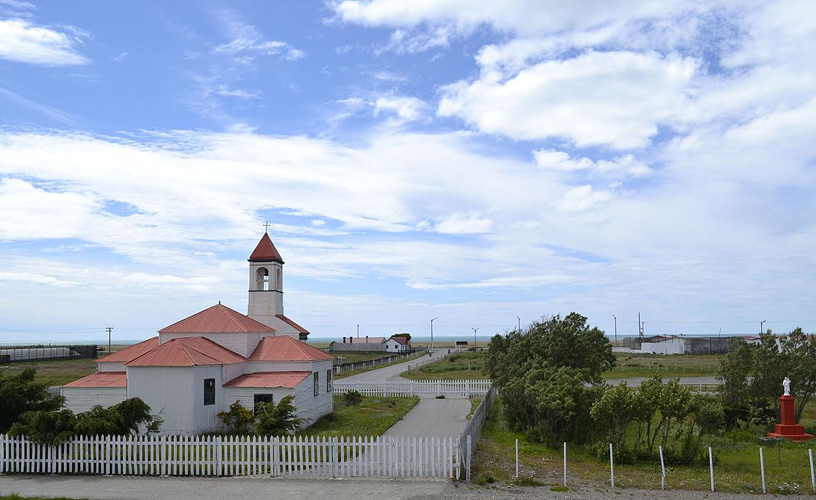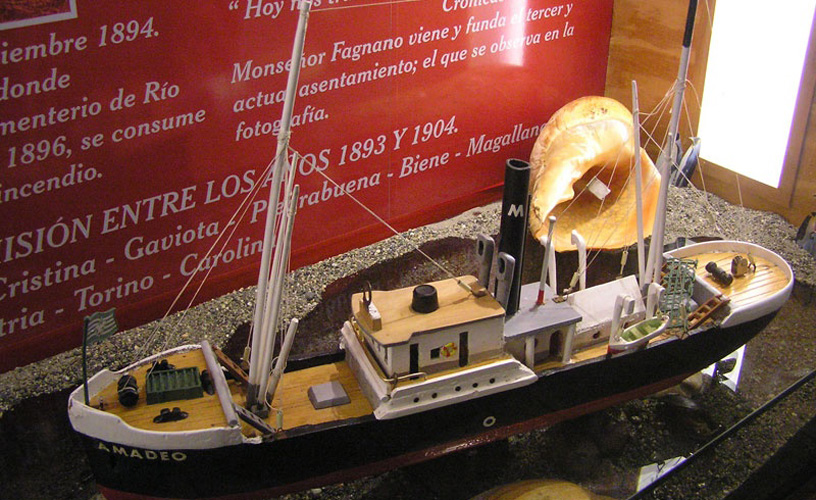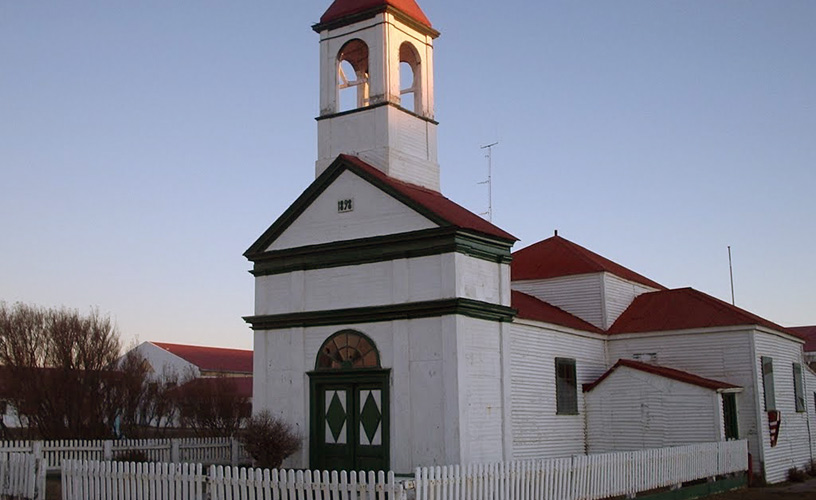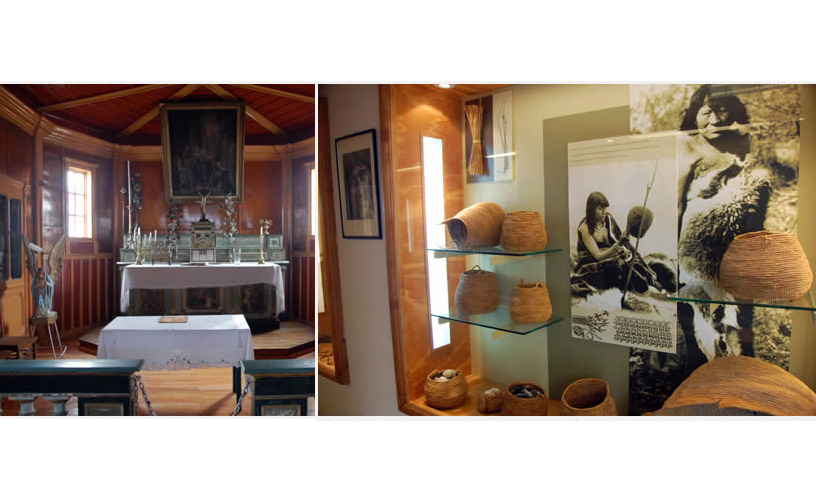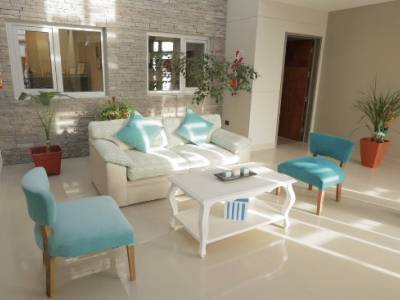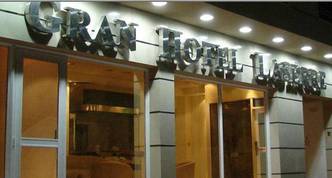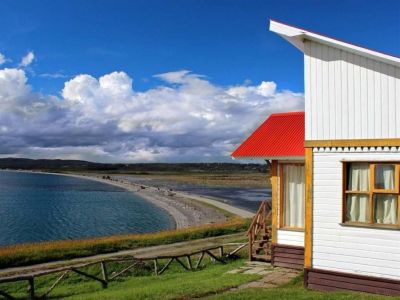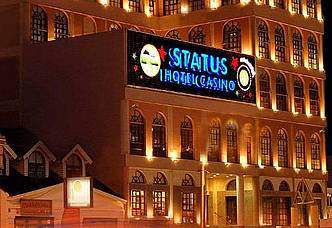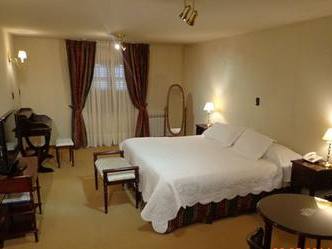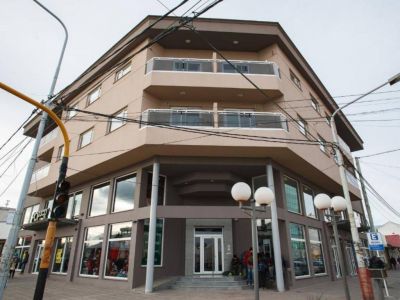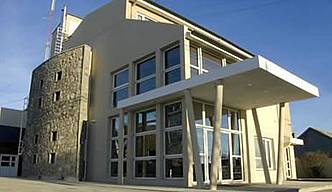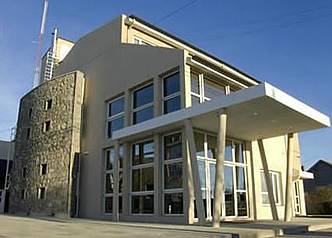Located 14 km from Río Grande, Don Bosco Salesian Mission, an educational, historic and religious center with ties to European orders, is part of the origins and present of the city. Its huge, white buildings can be spotted from afar. We were met by a guide who showed us around this pioneer undertaking.
We learned that in 1893, Monsignor José Fagnano founded a native Selk’nam settlement on the coast of the river which was also the home of the first missionaries. A raging fire completely burned it down some years later and the township was rebuilt a short way from Cape Santo Domingo on the land where Nuestra Señora de la Candelaria Mission stands today.
Year after year new buildings were added for pastoral activities, an agro technical school and museums exhibiting life on Tierra del Fuego.
A Visit to the Salesian Mission
An elderly priest guided us through the different rooms documenting the history and anthropology of the island including images and objects of the aborigines. The arrival of the missionaries and the first estancias are shown as well. A special room is devoted to native animals and birds embalmed by a taxidermist priest at the mission. A special treat was watching a quaint old film of the aborigines going about their daily lives.
Nuestra Señora de la Candelaria Chapel is near the museum. It was the second building constructed by the Salesians and has remained intact since its inauguration in 1899.
We silently walked up to the altar to admire its wooden structure and a beautiful painting of the Purification of the Virgin Mary, brought from Barcelona in 1901. The cross and the statues of Saint Joseph and Saint Francis of Sales complete the holy images. Monsignor Fagnano’s vestments and liturgical objects can be seen in the sacristy as well as other objects the Salesians hold dear, such as a harmonium, a chalice and notebooks written by the native people.
Mónica Pons
Karina Jozami
